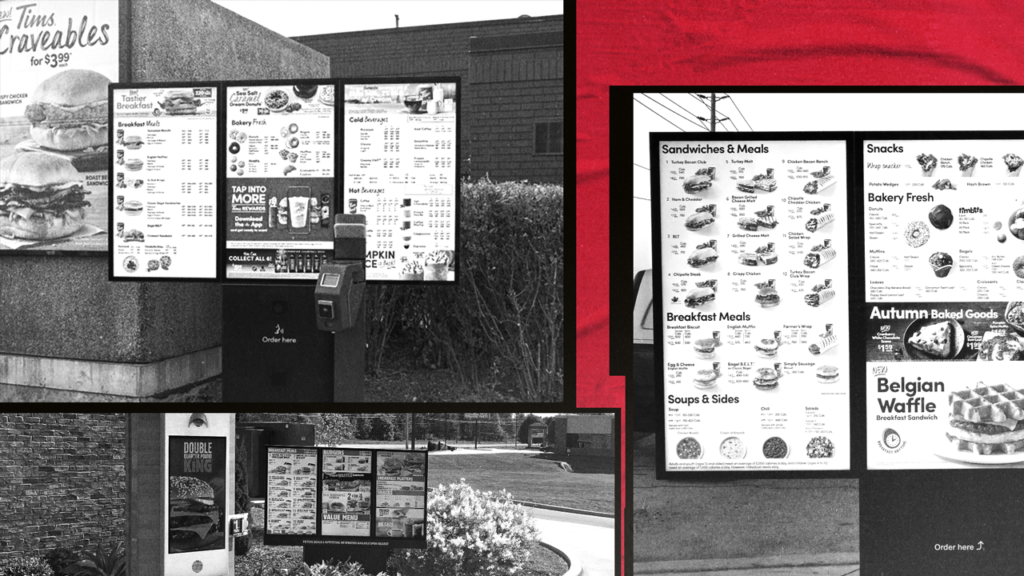Restaurant Brands International has announced that it’s testing digital drive-thru menu boards with loyalty program and remote, contactless payment integration at more than 10,000 Burger King, Popeyes and Tim Hortons chains in the US and Canada by mid 2022.
The company says it plans to install more than 40,000 waterproof digital screens featuring predictive selling technology that allows for special offers to be tailored based on customers’ previous orders, weather patterns and the time of day. The technology can “learn preferred ordering habits” and will show the latest and trending menu items most-ordered in a customer’s location.
The 46-inch digital screens, powered by Stratacache Media Engines, are featured in 800 Tim Hortons locations in the US and Canada and 1,500 Burger King locations in the US. They’ll arrive at Popeyes chains later this year.
RBI is currently testing digital menu boards with integrated loyalty programs, enabled via scanning, bluetooth or near-field communication, at 30 Tim Hortons locations in Canada.
Immediate, remote contactless payment backed by Verifone will also be available through the digital menu boards. A Tim Hortons restaurant in Canada is home to the first prototype of this payment method, with 15 additional locations to test the functionality by January 2021.
To further increase the efficiency at its restaurants, RBI is installing, where possible, double drive-thru lanes at some locations.
RBI’s push to modernize the drive-thru experience comes as over 100,000 bars and restaurants have permanently closed due to the pandemic and many intact restaurants are slow to offer socially-distanced outdoor dining services.
According to research from The NPD Group, drive-thru restaurant visits surged by 26 percent in Q2. Even as more restaurants reopened in July, drive-thru visits increased by 13 percent.
Rapid digital transformation has enabled brands to adapt to the crisis and will be a strategic necessity to thrive during the process of an economic recovery. But with automation comes large amounts of data and therefore, risk, especially with the enactment of data privacy regulations such as the General Data Protection Regulation (GDPR) in Europe and the California Consumer Privacy Act (CCPA). Remaining agile in the new normal will require brands to invest in automation tools that not only enhance consumer experiences but also protect their privacy.

